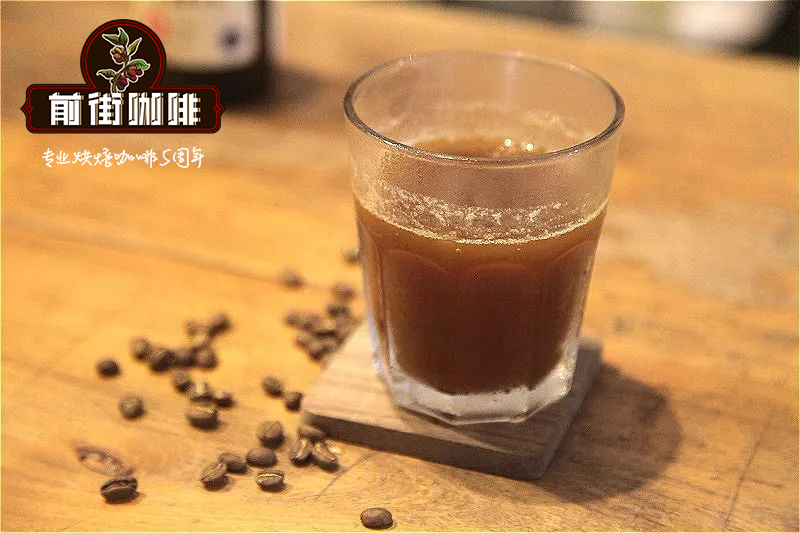Panama Kotowa Estate Kotowa A true boutique coffee estate Panamanian coffee

Professional coffee knowledge exchange more coffee bean information please follow the coffee workshop (Wechat official account cafe_style)
Manor close-up: a real boutique coffee manor
Panama Kotowa Geisha (Kotwa Manor Geisha, Panama)
Said to be in place at Kotowa Manor in Boquete (Poquet Valley).
Most coffee people will brighten their eyes!
And this is also the friends of Lianjie Coffee.
Favorite Panamanian manor!
First, let's take a look at its excellent competition results, not only winning awards year after year.
Just look at BOP (Best of Panama) in the last five years.
Regardless of whether the year is divided into two groups / three groups / four groups
The army of Kotowa is able to have a large binary / triple / quadruple land.
There are award-winning batches in each category every year.
It's really good enough!
Actually, in Kotowa Don K, Duncan, Las Brujas...
Behind the legend, there is a real coffee man--
Ricardo-Koyan (Ricardo Koyner)
He inherited his mother's grandfather
Alexander du Jian (Alexandar Duncan)
A coffee garden founded in 1917
And the washing plant built by Grandpa Don K...
However, Panamanian coffee was still unknown at that time.
Not only the geisha coffee tree is also waiting for people to explore.
Many beans of high quality
In the United States in the 1990s, she was disguised as Kona of Hawaii.
Innocently involved in the most famous coffee fraud in history...
At the same time, the price of coffee futures in New York has fallen year after year after the end of the Cold War.
The prospect of running a coffee farm was actually very bad at that time--
But Ricardo, who has a college degree in economics, knows very well
Kotowa Manor only produces the highest quality raw beans.
To get rid of the shackles of futures prices.
Only in this way can we have the basis for sustainable operation and even carry forward.
So, he embarked on the road of boutique coffee.
Unlike many "farmers" who own large tracts of land and farm labourers to produce coffee.
He is the owner of the "most peasant" coffee garden we have ever seen:
When we visited him for the first time, it was already night after the cup test round
Just when I was sorry that I didn't have a chance to actually go for a walk in his coffee garden.
He offered to take us to Don K and Duncan at six o'clock the next morning!
He said you're welcome, that's when he often goes up to see the coffee garden--
These two coffee plantations are on both sides of the same mountain line.
Is named in memory of his great-grandfather and grandfather.
It was the land he bought later under his management.
It used to be the production park of Kotowa Manor's flagship products.
1700 meters above sea level
Rely on Mount Volcan Baru, which belongs to the west side of the valley.
On the edge line, there is a sunny area planned as a high-altitude bean drying farm.
Responsible for handling all high-altitude sun-dried and washed beans--
The rest are hillsides covered with Kaddura (Caturra).
With Catuai...
But the Lingxian platform at the highest altitude is full of famous varieties of geisha!
Although the two adjacent gardens are not certified, the whole garden is cultivated organically:
The Bidens bipinnata which has not yet been hoed to shoulder height will pierce you all over the grass.
A shade tree three stories high emits the hum of ten thousand bees!
It turned out that the tree was in full bloom, and all the bees nearby came to collect honey--
It shows the richness of ecological resources.
Ricardo picked red ripe geisha berries and gave them to us to taste.
And the flesh should be mixed in the mouth.
Intense aromas of passion fruit / litchi / pineapple!
Just when the flavor of Baiguo drifted away in the nasal cavity
He took us close to one plant after another.
Next to a slightly different geisha tree, he said to us
"this is the fruit with longer seeds, and there is a mutant with a yellow pericarp over there."
Makes me wonder-- he seems to know every coffee tree.
And know exactly where they are?!
The most interesting thing is
When I met a harvester who asked for a group photo
Ricardo asked me to take a picture of him with the collector first!
Then there is a picture of me and the collector.
I have never seen a coffee farmer who is so close to the people!
When asked whether the relationship between altitude and coffee quality is absolute?
Ricardo said, "at least in the Poquet Valley, that's for sure!"
That's why it's already under Jaramillo on the east side of the valley.
There is a large coffee garden at an altitude of 1350 meters.
The reason for buying this higher altitude land.
But I also saw Ricardo striding forward on the road to boutique coffee.
The accurate judgment made and the subsequent efforts!
As a result, when coffee futures prices hit rock bottom in 2002,
At that time, the price was only 50 cents per pound, less than half of what it is now! )
Panamanian coffee is getting ready to rise as a new force--
At that time, Ricardo and other Wilford such as Elida Manor
Francisco of Don Pachi Manor
Brother and sister Daniel and Rachel of Esmeralda Manor
…… A group of excellent Panamanian coffee farmers
First, they launched the Panamanian Coffee Association (SCAP).
Sharing and learning about planting and processing techniques
And then hold the BOP competition.
It has attracted the attention of many boutique coffee lovers in just a few years.
Then came the dazzling geisha coffee.
Unexpectedly has been well-known and sought after all over the world!
Not only is it not a fluke at all
More is the silent efforts and open-minded sharing and learning!
The leading coffee garden as the core
Kotowa also quickly received a geisha seed from Esmeralda.
Put into the production and technical improvement of geisha coffee.
For example, the sun treatment is extremely disliked by SCAA cup testing experts.
Become another dazzling star in just a few years!
Today, Ricardo not only delves into the reasons for the various forms of geisha
And cooperate with UC Davis, the top agricultural research town in the United States.
Want to know more about the secrets of good taste produced by geisha!
In recent years, he has lost a lot of money.
Buy a piece as high as 1850 Murray 1900 meters.
Las Brujas, a coffee garden on the side of the Balu volcano.
And the local interesting surface potholes change rapidly due to the rapid change of the groundwater level.
On the other hand, there is a sudden drought and stagnant water, and there is a strong wind blowing.
As if the wizards were hiding in the woods.
So it was named after Spanish Brujas (witch)--
This is particularly rare in the Poquet Valley, where land prices are becoming more and more expensive!
(more often, farmers would rather sell their land and collect a large amount of cash at a time.)
Then enjoy the luxury life like winning the lottery! )
But he said it was worth it! Because of the higher altitude
Let the geisha take it to another level--
The only disadvantage is that, because it's cold there, the coffee trees grow slowly.
The rate of increase in production is also relatively slow.
So geisha at the wizard manor are still quite rare--
He also continues to devote himself to the upgrading of the manor's technology:
For example, about the "new sheller" specially used for sun-drying beans.
This is because the general sheller is designed to wash beans with water.
The sun-dried fruit shell like a raisin will stick and accumulate in this machine.
Cause the sheller to produce heat by severe friction, which is so hot that the hands will be scalded!
Such a high fever is definitely harmful to coffee beans.
In particular, the higher the altitude, the thicker the berry pulp, the greater the trouble!
A new special sheller for sun-dried beans, except that it is not easy to accumulate dried fruit shells.
Specially designed air-cooled pipes and powerful blowers.
All in order to completely solve the crisis of hot beans when the sun beans are shelled.
Also, he recently invested in two sets of "circulating cold dryers"
Circulating compressed air with precise control of relative humidity
Slowly drying shelled beans in a closed dryer system
Completely avoid exposure to higher temperatures of raw beans during drying
It is generally considered ideal to dry below 37 degrees Celsius.
But these two new toys from Ricardo can work below 20 degrees Celsius!
As for the question, what is the effect? He said with a little cunning:
"it may have worked, or it may not have been tried out yet--"
Also, about preserving raw beans...
He generously opened a warehouse dedicated to the storage of fine raw beans--
The small room was built two stories high-- I saw an air-conditioner running!
This is my first time in the producing area, I saw someone using the air-conditioning system to save raw beans!
(of course, when I see some people with the same turtle hair later on,
It's not weird to see more! )
Also, he is testing several water washing methods for wet / dry fermentation
And get a lot of key principles to improve the quality.
And... ... ...
Maybe we can't fully understand that in the Poquet Valley
All the details of how to make better coffee! In fact,
These details are still being better understood and improved every day.
But the only thing we understand is that a good cup of coffee is hard to come by:
Starting with the raw beans, it's the mountains / the trees / the people.
Work hard together!
Important Notice :
前街咖啡 FrontStreet Coffee has moved to new addredd:
FrontStreet Coffee Address: 315,Donghua East Road,GuangZhou
Tel:020 38364473
- Prev

Panama Cotova Manor Panama Finca Kotowa Panamanian Coffee Brand
Professional coffee knowledge exchange more information about coffee beans please follow the coffee workshop (Wechat official account cafe_style) Kotowa means mountain in the native language of Panama. The founder of the manor: Alexander. Duncan. McIntyre, a Canadian. One day in 1918, he read a report about Pocket in Panama in Central America. The report details the gods here.
- Next

Burundian Breer processing Plant introduces Burundian Coffee Flavor introduces Burundian hand-flushing parameters
For more information on coffee beans, please follow the coffee workshop (Wechat official account cafe_style) Burundi, a small African country sandwiched between Rwanda, the Republic of Congo and Tanzania. The history of coffee cultivation in Burundi began in the 1930s when coffee was introduced into the country by the Belgians. Since 1998, Burundi will produce coffee with NG
Related
- Does Rose Summer choose Blue, Green or Red? Detailed explanation of Rose Summer Coffee plots and Classification in Panamanian Jade Manor
- What is the difference between the origin, producing area, processing plant, cooperative and manor of coffee beans?
- How fine does the espresso powder fit? how to grind the espresso?
- Sca coffee roasting degree color card coffee roasting degree 8 roasting color values what do you mean?
- The practice of lattes: how to make lattes at home
- Introduction to Indonesian Fine Coffee beans-- Java Coffee producing area of Indonesian Arabica Coffee
- How much will the flavor of light and medium roasted rose summer be expressed? What baking level is rose summer suitable for?
- Introduction to the characteristics of washing, sun-drying or wet-planing coffee commonly used in Mantenin, Indonesia
- Price characteristics of Arabica Coffee Bean Starbucks introduction to Manning Coffee Bean Taste producing area Variety Manor
- What is the authentic Yega flavor? What are the flavor characteristics of the really excellent Yejasuffi coffee beans?

